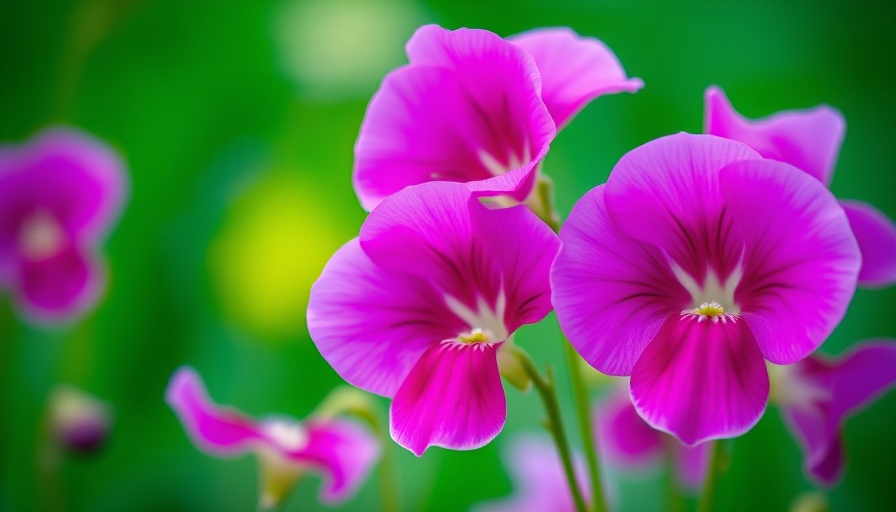
The Mystery of Non-Blooming Sweet Peas
Sweet peas, scientifically known as Lathyrus odoratus, are cherished by gardeners for their vibrant blooms and delightful fragrance. However, even the most dedicated gardeners often face the disappointing issue of non-blooming sweet peas. Understanding what prevents these plants from flourishing can transform your gardening experience and help you reap the rewards of a breathtaking flower display. In this article, we will explore the primary reasons sweet peas fail to bloom and share effective solutions to ensure a lush, colorful garden.
1. The Puzzle of Bud Drop
One of the most perplexing issues sweet pea growers encounter is bud drop. This phenomenon can occur suddenly, leaving gardeners scratching their heads. Bud drop is not a disease but is influenced by environmental factors such as strong winds, abrupt temperature changes, or excessive rainfall. To combat this issue, it’s vital to maintain proper care. If you witness bud drop, promptly cut back the budless stems to their origin. Keep temperatures below 80°F to encourage new bud growth.
2. The Threat of Diseases
Sweet peas, while hardy, can fall prey to fungal diseases like anthracnose and powdery mildew. Both can significantly hinder blooming. Anthracnose manifests as white spots, leading to withered tissue, while powdery mildew leaves a grayish-white coating on leaves. For both diseases, remove affected areas and treat your plants with neem oil to prevent further spread. Adopting practices such as spacing your plants generously enhances air circulation, reducing the likelihood of disease.
3. Nitrogen Level Dilemma
While nitrogen is essential for plant health, an excess can lead to an overabundance of foliage at the expense of blooms. Gardens often face this issue if they're heavily fertilized without proper monitoring. To rectify this, choose a balanced fertilizer that supports flowering. An effective strategy is to test your soil, allowing you to tailor your nutrient application precisely to your plants' needs. This adjustment is crucial for encouraging healthy flowering.
4. Facing the Heat
Sweet peas thrive in cooler temperatures and can suffer during extreme heat, leading to reduced blooms. Extreme temperatures can stress plants, causing them to halt flowering. In urban gardens, reflecting on climate-friendly gardening methods can preserve the delicate balance sweet peas need. Consider providing shade, particularly during the hottest parts of the day, using cloth or strategic plant arrangement to shield your sweet peas from harsh sunlight.
5. Light-ing the Path to Blooming
Lack of adequate sunlight can stunt sweet pea growth and blooming. Aim for 6-8 hours of full sun each day, ensuring your sweet peas are planted in a location where they can receive sufficient light. If you’re gardening in shaded areas, consider shade gardening techniques that feature companion plants that thrive together under partial coverage. Remember, healthy sunlight exposure taps into the natural energy that fuels blooming.
6. The Pest Problem
Pests can wreak havoc in any garden, and sweet peas are no exception. Common culprits such as aphids and spider mites can stress plants, hindering their ability to bloom. Regular pest inspections and implementing pest-resistant plants can mitigate damage. The use of organic pesticides or simple homemade sprays can offer protection without compromising the health of your flower garden environment.
7. Soil Quality Matters
Healthy soil ensures vibrant blooms. Poor soil quality, compacted or lacking essential nutrients, can stunt sweet pea growth. Regularly amending your garden bed with organic matter and well-rotted compost improves soil structure and fertility, setting the stage for lush, blooming plants. This step aligns well with sustainable living practices and can be part of your journey into climate-friendly gardening.
Actionable Insights and Key Takeaways
As you dig into the art of sweet pea cultivation, remember that understanding the holistic health of your plants is essential. Monitor environmental conditions, ensure proper soil quality, and adopt integrated pest management practices. Utilize your home gardening knowledge to create an environment where sweet peas can thrive. Happy gardening!
 Add Row
Add Row  Add
Add 




 Add Row
Add Row  Add
Add 

Write A Comment